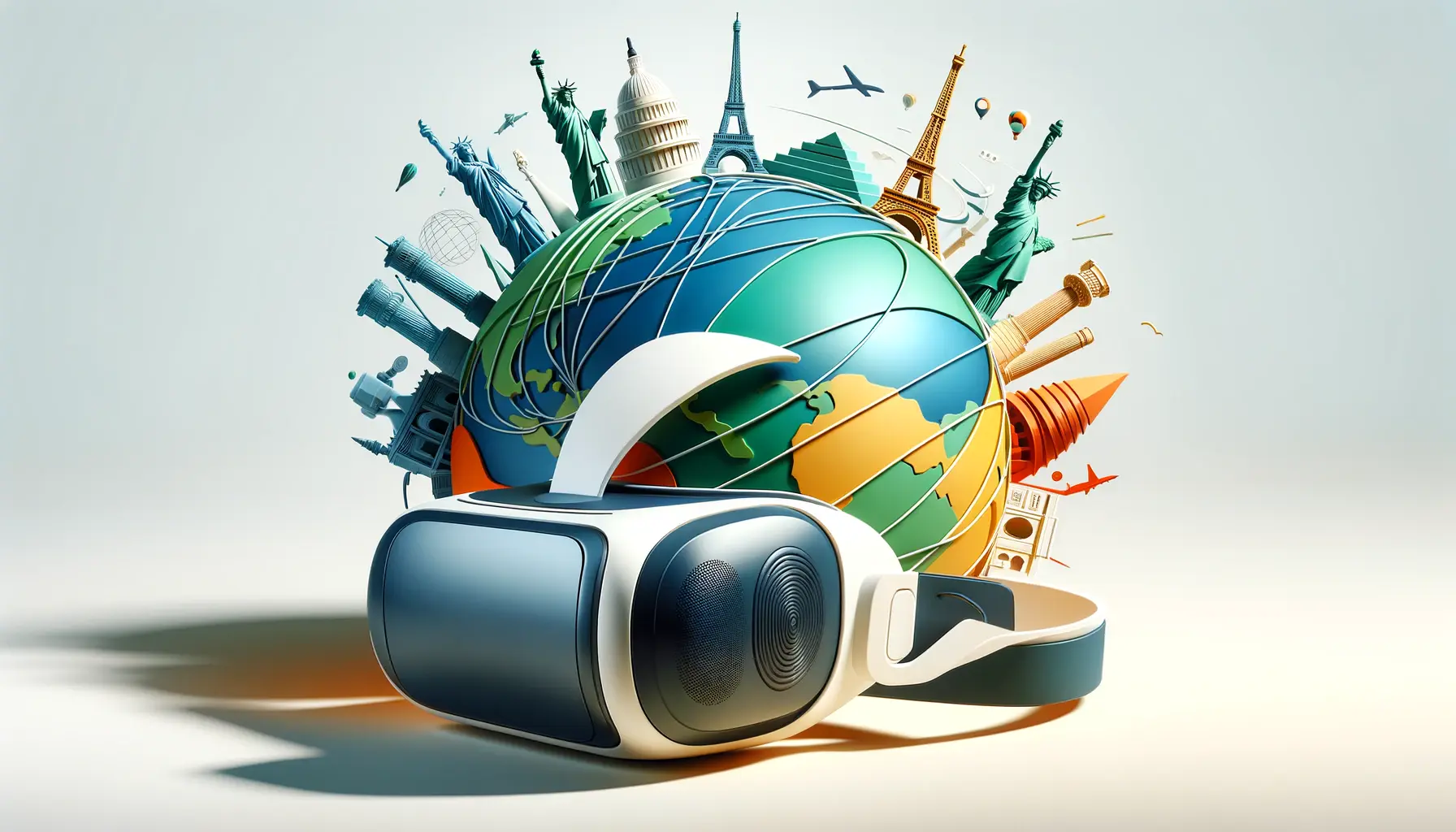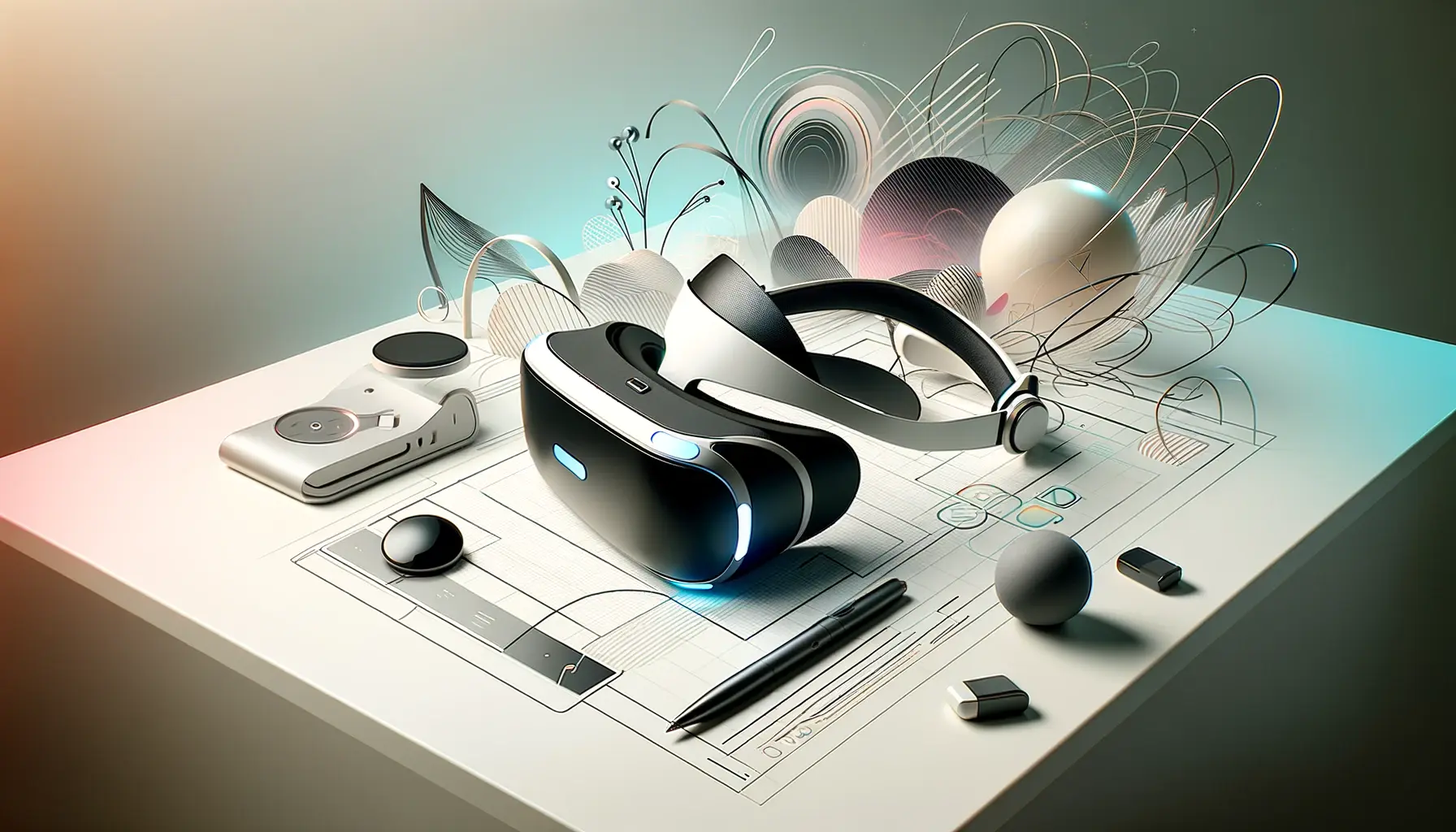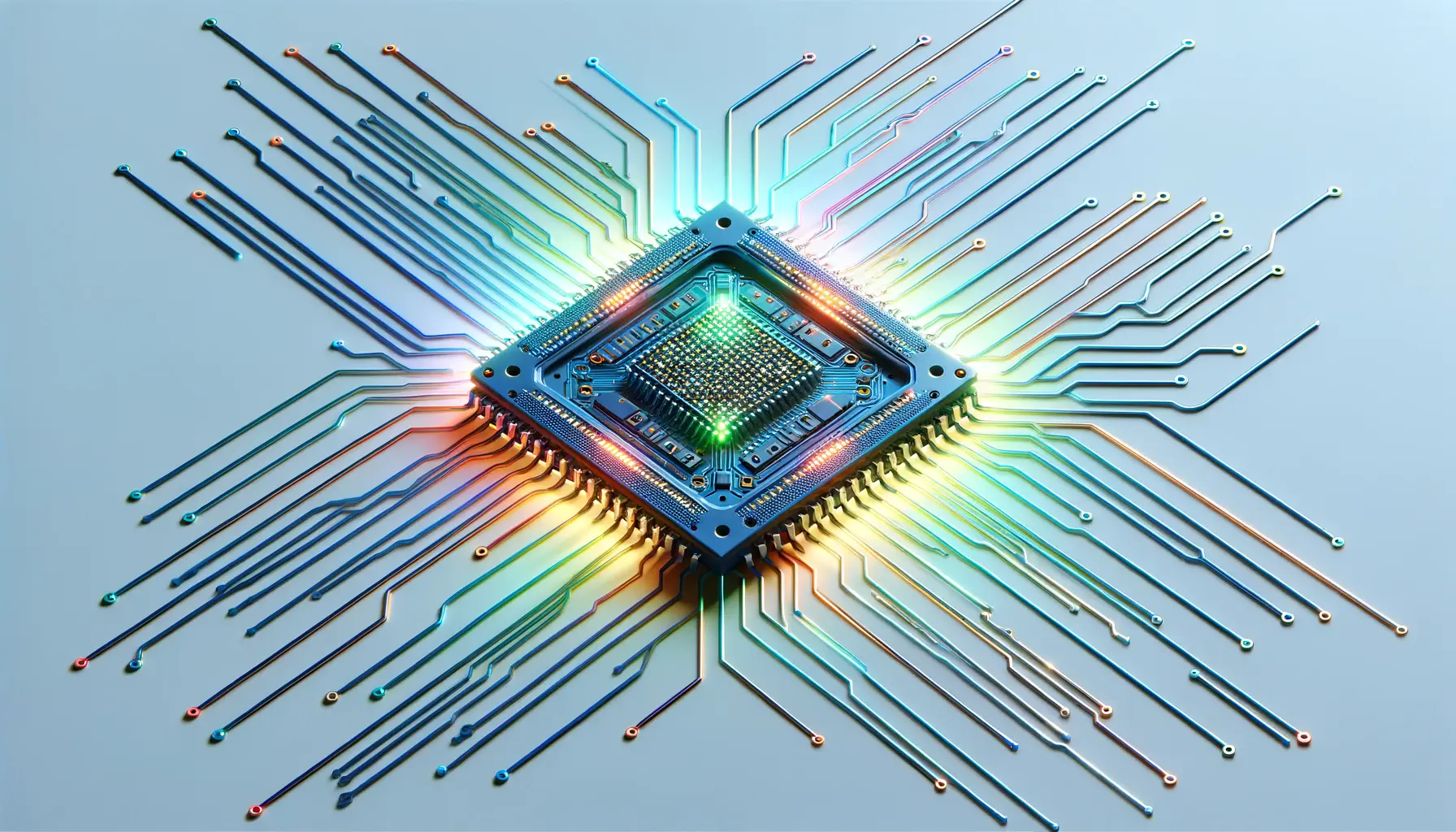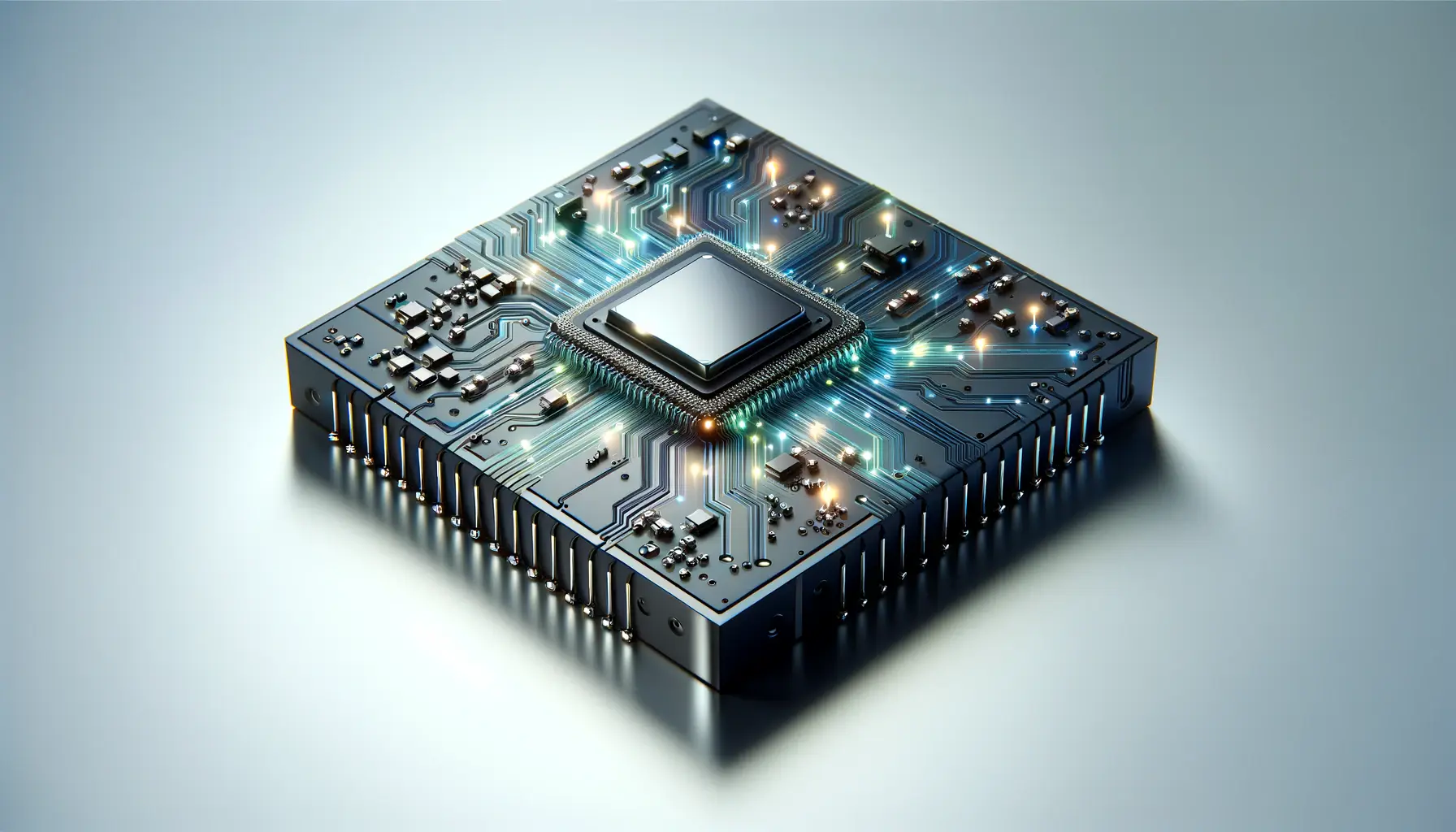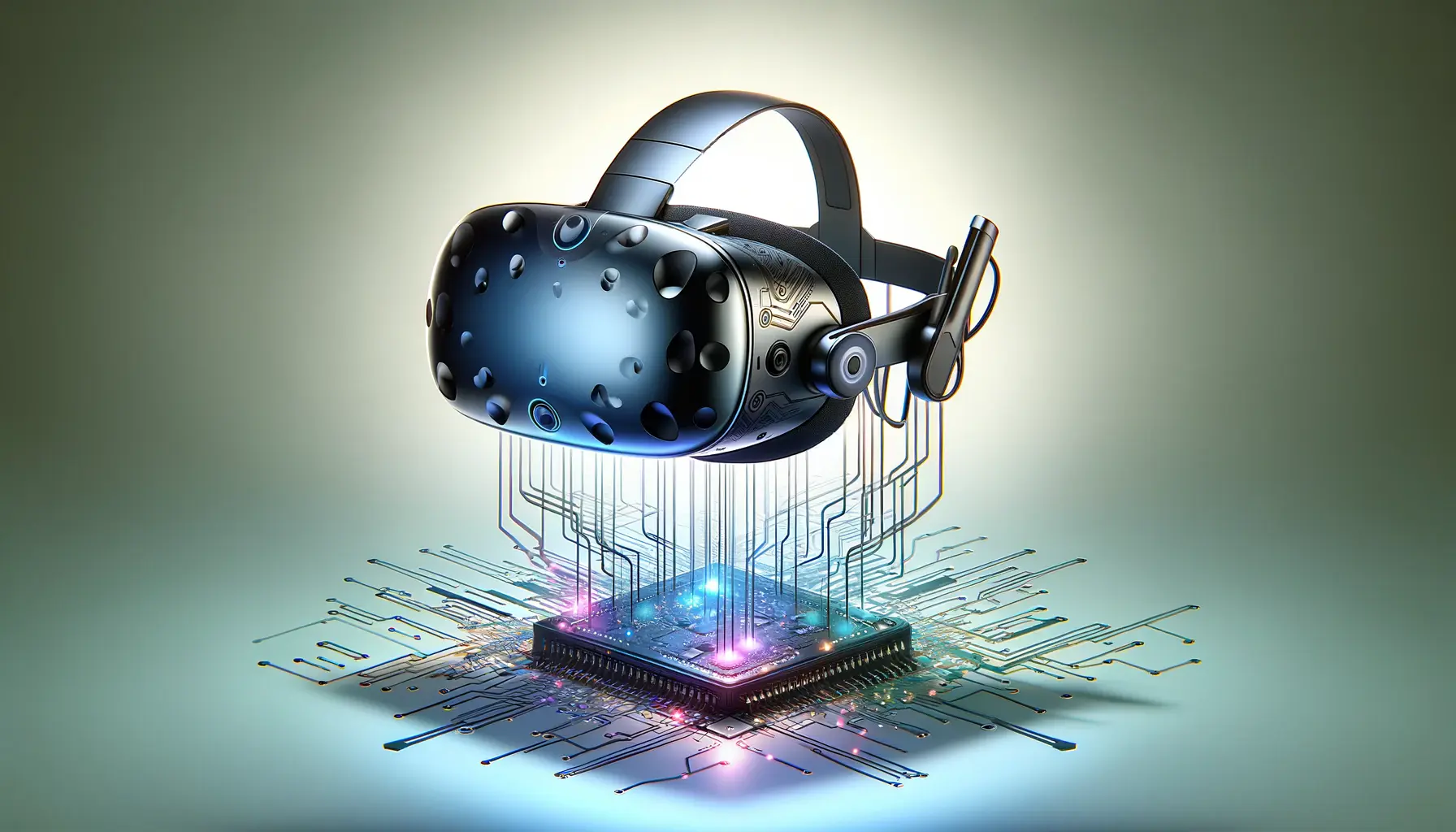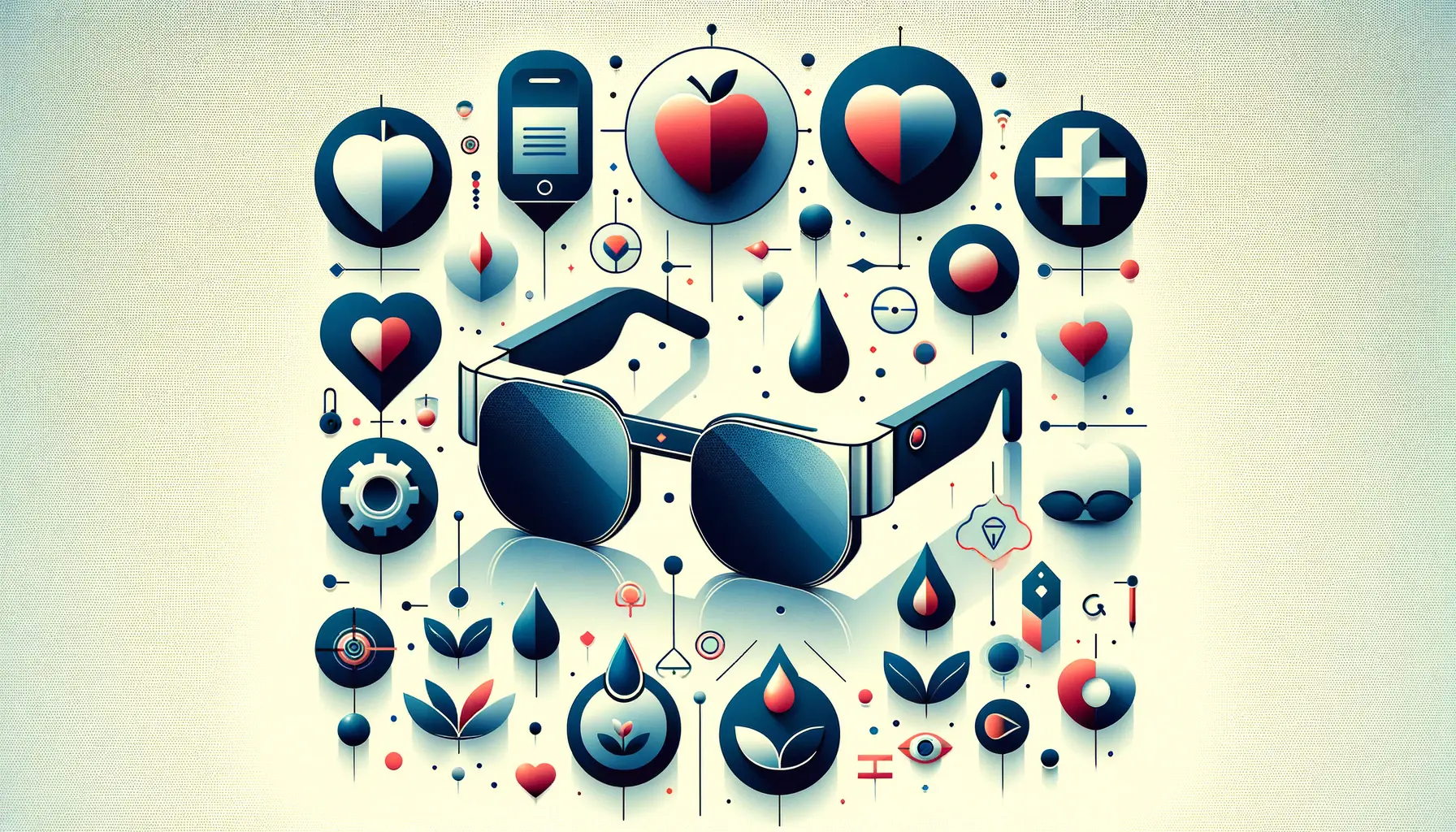The unveiling of Apple Vision Pro marks a significant milestone in the realm of personal computing and augmented reality (AR).
This innovative device, emerging from Apple’s relentless pursuit of blending the digital with the physical, introduces a new era of spatial computing.
The Vision Pro, with its cutting-edge technology, is not merely a product but a testament to Apple’s vision of the future where our physical and digital worlds converge seamlessly.
At its core, the Apple Vision Pro is designed to revolutionize how we interact with our surroundings, offering a unique blend of augmented and virtual reality experiences.
With its advanced sensors, cameras, and processing power, the Vision Pro is poised to redefine our digital interactions, making them more immersive and intuitive than ever before.
Understanding Spatial Computing
What is Spatial Computing?
Spatial computing represents a leap forward in how technology interprets and manipulates physical space.
It’s the foundation upon which the Apple Vision Pro is built, allowing users to interact with digital content overlaid onto their real-world environment.
This technology enables devices to understand and navigate the three-dimensional space, offering an immersive experience that goes beyond the flat screens of smartphones and tablets.
The Vision Pro, through spatial computing, allows users to see and manipulate digital objects as if they were part of their physical environment.
This not only enhances the user experience but also opens up new possibilities for applications ranging from design and education to entertainment and beyond.
Core Technologies Behind the Vision Pro
The Apple Vision Pro’s exceptional capabilities are powered by a combination of advanced technologies.
At the heart of the device lies a dual-chip system comprising the M2 and R1 chips.
The M2 chip, known for its high performance and efficiency, runs visionOS and executes complex computer vision algorithms.
Meanwhile, the R1 chip is dedicated to processing inputs from the Vision Pro’s array of cameras, sensors, and microphones, ensuring a seamless and lag-free experience.
Furthermore, the Vision Pro utilizes micro-OLED displays to deliver stunning visuals with high resolution and vibrant colors.
These displays, combined with the device’s sophisticated lens system, create a convincing illusion of depth and space, making digital content appear as though it exists within the user’s physical environment.
The integration of spatial computing in the Apple Vision Pro represents a significant advancement in how we interact with technology, blending the digital and physical worlds in ways previously unimaginable.
The Vision Pro Experience
The Apple Vision Pro is not just about the hardware or the underlying technology; it’s about the experience it offers to the users.
This experience is defined by the seamless integration of augmented reality with the user’s physical environment, creating a mixed-reality experience that is both immersive and intuitive.
The Vision Pro achieves this through a series of innovative features and functionalities that set it apart from any other device currently available on the market.
One of the key aspects of the Vision Pro experience is its user interface (UI).
Designed to be both intuitive and engaging, the UI of the Vision Pro allows users to interact with their digital environment in a completely natural way.
This is achieved through a combination of eye tracking, voice commands, and hand gestures, which together create a user experience that is both fluid and responsive.
Intuitive User Interface
- Eye Tracking: The Vision Pro uses advanced eye-tracking technology to understand where the user is looking, allowing for precise control over the digital environment. This technology enables users to select, navigate, and interact with digital content simply by looking at it.
- Hand Gestures: In addition to eye tracking, the Vision Pro recognizes hand gestures, allowing users to manipulate digital objects as if they were physically present. This includes gestures like pinching, swiping, and tapping, further enhancing the immersive experience.
- Voice Commands: Voice control is another integral part of the Vision Pro’s UI, enabling users to execute commands or search for information without the need for physical interaction. This hands-free approach not only adds to the convenience but also makes the technology more accessible.
Enhanced Real-World Integration
The Vision Pro’s ability to blend digital content with the real world is perhaps its most groundbreaking feature.
This is made possible through the use of passthrough technology, which captures the user’s environment using external cameras and then overlays digital content onto the live feed.
The result is a mixed-reality experience that feels both natural and immersive.
Moreover, the Vision Pro’s spatial audio technology adds another layer of immersion to the experience.
By delivering sound that appears to come from the digital objects themselves, the Vision Pro creates a convincing sense of presence, making the digital content feel even more real.
The Apple Vision Pro’s innovative user interface and its ability to integrate digital content with the real world not only redefine the boundaries of augmented reality but also offer a glimpse into the future of personal computing.
Applications and Use Cases
The potential applications and use cases for the Apple Vision Pro span across various industries, showcasing the device’s versatility and its capacity to revolutionize how we interact with digital content.
From enhancing productivity in the workplace to transforming educational methodologies, the Vision Pro is set to make a significant impact.
One of the most compelling aspects of the Vision Pro is its ability to bring digital content into the physical world, offering new ways to learn, work, and play.
This capability opens up endless possibilities for developers and content creators to explore new forms of interaction and engagement.
Revolutionizing Education and Training
- Interactive Learning: The Vision Pro can transform educational content into interactive 3D models, making learning more engaging and effective. Students can explore complex concepts in science, history, and art in a visually immersive environment.
- Skills Training: In vocational training, the Vision Pro can simulate real-world scenarios, allowing learners to practice skills in a safe and controlled environment. This is particularly beneficial in fields such as medicine, engineering, and aviation.
Enhancing Workplace Productivity
- Remote Collaboration: The Vision Pro can create virtual meeting spaces where participants feel as though they are in the same room. This can greatly enhance collaboration among remote teams, making interactions more natural and efficient.
- Design and Visualization: For designers and architects, the Vision Pro offers tools to visualize and manipulate 3D models in real space, streamlining the design process and enabling more creative freedom.
Transforming Entertainment and Media
- Immersive Gaming: The Vision Pro takes gaming to a new level by blending digital game environments with the player’s physical space, creating truly immersive experiences that are not possible with traditional gaming consoles.
- Next-Generation Media: For filmmakers and content creators, the Vision Pro offers a new medium to tell stories, allowing viewers to step inside the narrative and experience content in a more engaging way.
The Apple Vision Pro’s wide range of applications and use cases demonstrates its potential to not only enhance personal entertainment but also to revolutionize professional fields by bridging the gap between digital content and the physical world.
Design and Comfort
The Apple Vision Pro is not just a technological marvel; it’s also a masterpiece of design and comfort.
Apple has always been renowned for its attention to detail and aesthetics, and the Vision Pro is no exception.
The device’s design is a critical factor in its usability and user acceptance, especially for a product intended to be worn for extended periods.
Understanding the importance of comfort and ease of use, Apple has meticulously designed the Vision Pro to ensure it meets the high standards expected from its products.
This focus on design and comfort is evident in every aspect of the Vision Pro, from its materials to its fit and adjustability.
Ergonomic Design
- Lightweight Materials: The Vision Pro is crafted from lightweight materials that reduce the strain on the user’s head and neck, making it comfortable to wear for extended periods.
- Adjustable Straps: To accommodate different head sizes and shapes, the Vision Pro features adjustable straps that ensure a secure and comfortable fit for a wide range of users.
Advanced Comfort Features
- Customizable Eye Relief: Recognizing that users have different visual needs, the Vision Pro offers customizable eye relief settings, allowing users to adjust the focus for optimal clarity without the need for prescription glasses.
- Integrated Airflow: To prevent discomfort from heat buildup, the Vision Pro incorporates integrated airflow channels that help keep the user cool during use.
Attention to Aesthetics
Beyond functionality, the Vision Pro also stands out for its sleek and modern design.
Apple’s commitment to aesthetics ensures that the device not only performs exceptionally but also looks good while doing so.
The Vision Pro’s design is both futuristic and minimalistic, embodying the essence of Apple’s design philosophy.
The combination of ergonomic design, advanced comfort features, and attention to aesthetics makes the Apple Vision Pro a standout device in the realm of augmented reality headsets.
Apple’s focus on creating a product that is both functional and beautiful demonstrates its understanding of the importance of design in the user experience.
The design and comfort of the Apple Vision Pro are as much a part of its innovation as the technology inside it. Apple has created a device that users will not only appreciate for its capabilities but also for its comfort and style.
visionOS: A New Dimension of Interaction
The introduction of visionOS with the Apple Vision Pro brings a revolutionary operating system designed specifically for spatial computing and augmented reality.
This bespoke OS is a testament to Apple’s commitment to creating seamless and intuitive user experiences, extending the familiar ease of use of iOS into a three-dimensional space.
visionOS is the linchpin that enables the Vision Pro to deliver its groundbreaking capabilities, offering users a new dimension of interaction with digital content.
visionOS is engineered to make the most of the Vision Pro’s hardware, optimizing performance and enabling the device to understand and interact with the user’s environment in real time.
It’s a sophisticated blend of technology and user-centric design, ensuring that the spatial computing experience is not only powerful but also accessible to all.
Seamless Integration with Apple Ecosystem
- Continuity Features: visionOS integrates seamlessly with the broader Apple ecosystem, allowing users to effortlessly switch between their Apple devices and the Vision Pro. This integration enhances productivity and ensures a unified experience across all Apple products.
- App Compatibility: Developers can create apps for visionOS using familiar tools, ensuring a rich library of applications is available from day one. This compatibility encourages innovation and expands the device’s utility across different use cases.
User-Centric Design
- Intuitive Navigation: With visionOS, navigating through apps and content is intuitive, leveraging natural gestures and voice commands. This ease of navigation is crucial for ensuring that users can fully engage with the spatial computing experience without a steep learning curve.
- Customizable Interfaces: Recognizing the personal nature of spatial computing, visionOS offers customizable interfaces, allowing users to tailor their experiences according to their preferences and needs.
Enhanced Security and Privacy
Apple’s commitment to user privacy and security extends to visionOS, with built-in features designed to protect user data and ensure a secure computing environment.
From encrypted data storage to secure authentication methods, visionOS is built with privacy at its core, giving users peace of mind as they explore the possibilities of spatial computing.
The launch of visionOS alongside the Apple Vision Pro not only sets a new standard for augmented reality interfaces but also marks a significant step forward in the evolution of operating systems.
By designing an OS specifically for spatial computing, Apple is paving the way for a future where digital and physical worlds merge seamlessly, offering users unprecedented ways to interact with technology.
visionOS is more than just an operating system; it’s the gateway to a new era of computing, where the boundaries between the digital and the physical blur, creating experiences that were once the realm of science fiction.
Future Prospects and Evolution
The Apple Vision Pro, powered by visionOS, is not just a milestone in today’s technology landscape; it’s a harbinger of the future of personal computing.
As we stand on the brink of this new era, the potential for growth and evolution within the realm of spatial computing is immense.
The Vision Pro is just the beginning, a foundation upon which endless possibilities will be built.
Looking ahead, the future prospects of the Vision Pro and similar technologies are bound to influence various aspects of our lives, from how we work and learn to how we entertain ourselves and interact with the world around us.
The implications of this technology extend far beyond the current capabilities, promising a future where augmented reality becomes as integral to our daily lives as smartphones are today.
Expanding the Ecosystem
- As the technology matures, we can expect to see a broader ecosystem of devices and applications designed to work seamlessly with the Vision Pro. This expansion will likely include more specialized hardware for different use cases and a richer library of apps that leverage the unique capabilities of spatial computing.
- Developers and content creators will play a crucial role in this evolution, pushing the boundaries of what’s possible and exploring new ways to create immersive and interactive experiences.
Advancements in Technology
- Future versions of the Vision Pro and visionOS will undoubtedly benefit from advancements in technology, including more powerful processors, improved display and sensor technologies, and enhanced AI capabilities. These advancements will enable even more immersive experiences, with greater realism and interactivity.
- As the hardware becomes more sophisticated, we can also anticipate improvements in design and comfort, making future devices even more accessible and enjoyable to use for extended periods.
Broader Impact on Society
The widespread adoption of spatial computing devices like the Vision Pro has the potential to significantly impact society.
In education, for example, these technologies could revolutionize how subjects are taught and understood, making learning more engaging and effective.
In the workplace, spatial computing could enhance collaboration and creativity, breaking down geographical barriers and fostering innovation.
Moreover, as these technologies become more integrated into our daily lives, they will likely influence how we perceive and interact with the world around us, blurring the lines between digital and physical realities and opening up new avenues for exploration and discovery.
The future of the Apple Vision Pro and spatial computing is not just about technological advancements; it’s about shaping a future where our digital and physical worlds are intertwined, creating new possibilities for interaction, creativity, and understanding.
Challenges and Considerations
While the Apple Vision Pro and the broader realm of spatial computing offer exciting possibilities, they also present a set of challenges and considerations that must be addressed.
As with any pioneering technology, navigating the path from innovation to widespread adoption involves overcoming obstacles and making careful considerations about impact and ethics.
The journey of the Vision Pro into the mainstream market will be shaped by how effectively these challenges are met and how the technology evolves in response to user needs and societal expectations.
Understanding these challenges is crucial for ensuring the technology benefits all segments of society while minimizing potential downsides.
Accessibility and Inclusivity
- One of the primary challenges facing the Vision Pro and similar technologies is ensuring they are accessible and inclusive. This means making the devices affordable and designing them in a way that accommodates users with different abilities and needs.
- Addressing this challenge requires a commitment to reducing costs over time and adopting universal design principles that make spatial computing accessible to as broad an audience as possible.
Privacy and Security
- The immersive nature of spatial computing raises significant privacy and security concerns. As devices like the Vision Pro become more integrated into our lives, protecting user data and ensuring the security of personal information become paramount.
- Developing robust privacy frameworks and secure systems will be essential for building trust and ensuring that the benefits of spatial computing are not overshadowed by concerns over data misuse or breaches.
Health and Well-being
- The impact of prolonged use of augmented reality devices on health and well-being is another area that requires careful consideration. Ensuring that these devices do not contribute to issues such as eye strain, motion sickness, or cognitive overload is crucial.
- Research and ongoing refinement of the technology will be necessary to mitigate these risks and ensure that spatial computing enhances, rather than detracts from, users’ well-being.
Societal Impact
The widespread adoption of spatial computing will also have broader societal implications, from changes in how we communicate and interact to potential impacts on employment and the economy.
Navigating these changes will require thoughtful consideration and proactive measures to ensure that the technology benefits society as a whole.
As the Apple Vision Pro and similar technologies move forward, addressing these challenges and considerations will be key to unlocking their full potential and ensuring they lead to positive outcomes for individuals and society alike.
Ignoring the challenges and considerations associated with spatial computing could hinder the technology’s adoption and limit its positive impact. Addressing these issues head-on is essential for the future success of devices like the Apple Vision Pro.
Embracing the Future with Apple Vision Pro
The journey through the technological marvel that is the Apple Vision Pro reveals a future where the boundaries between the digital and physical worlds are not just blurred but seamlessly integrated.
This device stands as a testament to Apple’s commitment to innovation, pushing the envelope of what’s possible in personal computing and augmented reality.
The Vision Pro, with its cutting-edge technology, ergonomic design, and visionOS, offers a glimpse into a future where our interactions with digital content are more intuitive, immersive, and meaningful than ever before.
The Path Forward
As we look to the future, the potential of the Apple Vision Pro and spatial computing is boundless.
From transforming educational paradigms to revolutionizing workplace collaboration, the applications of this technology are as diverse as they are impactful.
However, the journey ahead is not without its challenges.
Addressing concerns around accessibility, privacy, health, and societal impact will be crucial in realizing the full potential of the Vision Pro and ensuring it benefits all segments of society.
Key Considerations for a Brighter Future
- Ensuring the Apple Vision Pro is accessible and inclusive, making spatial computing available to a wider audience.
- Building robust privacy and security measures to protect users in a world where digital and physical realities converge.
- Considering the health and well-being of users to ensure that advancements in technology enhance, rather than detract from, our quality of life.
- Understanding and mitigating the broader societal impacts of spatial computing, ensuring that the technology serves as a force for good.
The Apple Vision Pro represents more than just a leap forward in technology; it embodies a vision for the future of interaction, creativity, and exploration.
As we stand on the cusp of this new era, the collective efforts of developers, users, and society at large will shape the trajectory of spatial computing.
By embracing the opportunities and addressing the challenges head-on, we can ensure that the future shaped by the Apple Vision Pro and similar technologies is one that is bright, inclusive, and full of possibilities.
In conclusion, the Apple Vision Pro is not just a device but a doorway to a new dimension of computing, where the digital enhances the physical, and technology serves to bring us closer to our world and to each other.
As we move forward, the evolution of the Vision Pro and spatial computing will undoubtedly continue to captivate and inspire, driving us towards a future where technology and humanity converge in harmony.
If you're seeking expertise in Apple Search Ads campaigns, visit our service page for professional management!
Apple Vision Pro FAQs
Explore commonly asked questions about the groundbreaking Apple Vision Pro to better understand its capabilities, usage, and features.
The Apple Vision Pro is a spatial computer that integrates digital content into your physical space, navigable via eyes, hands, and voice.
It uses cameras and sensors to scan surroundings, creating a 3D map for immersive digital content interaction.
Yes, but with specific prescription inserts designed for the device, including for astigmatism.
No, it’s advised not to use the Vision Pro while operating vehicles or machinery for safety.
Yes, its electromagnetic fields and components may impact users with certain medical conditions.
It features familiar apps like Safari, Photos, Music, and Messages, all adapted for spatial computing.
visionOS optimizes performance for spatial computing, offering intuitive navigation and seamless Apple ecosystem integration.
Its dual-chip design, including the M2 and R1 chips, ensures a lag-free, immersive AR experience with high efficiency.

